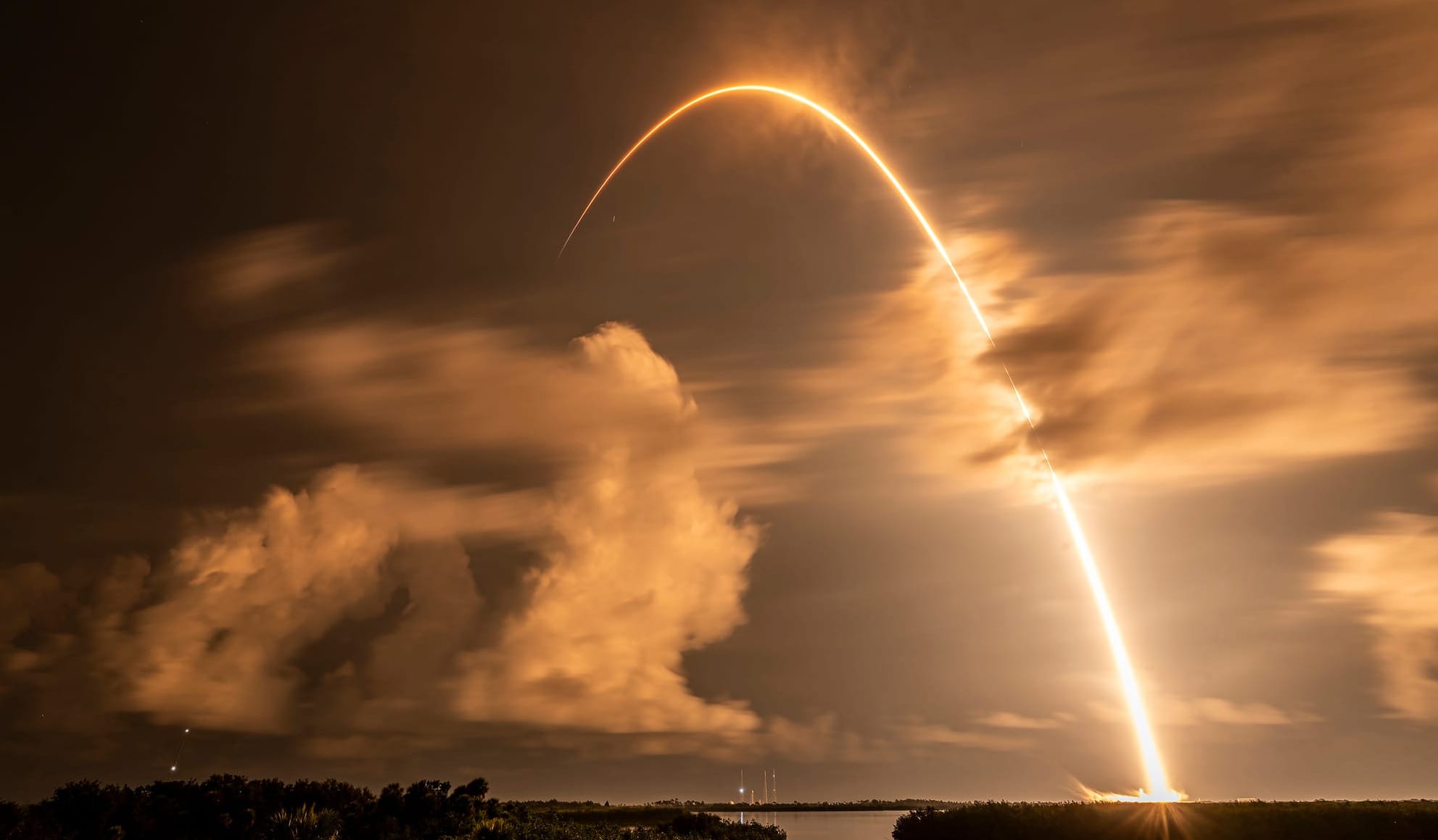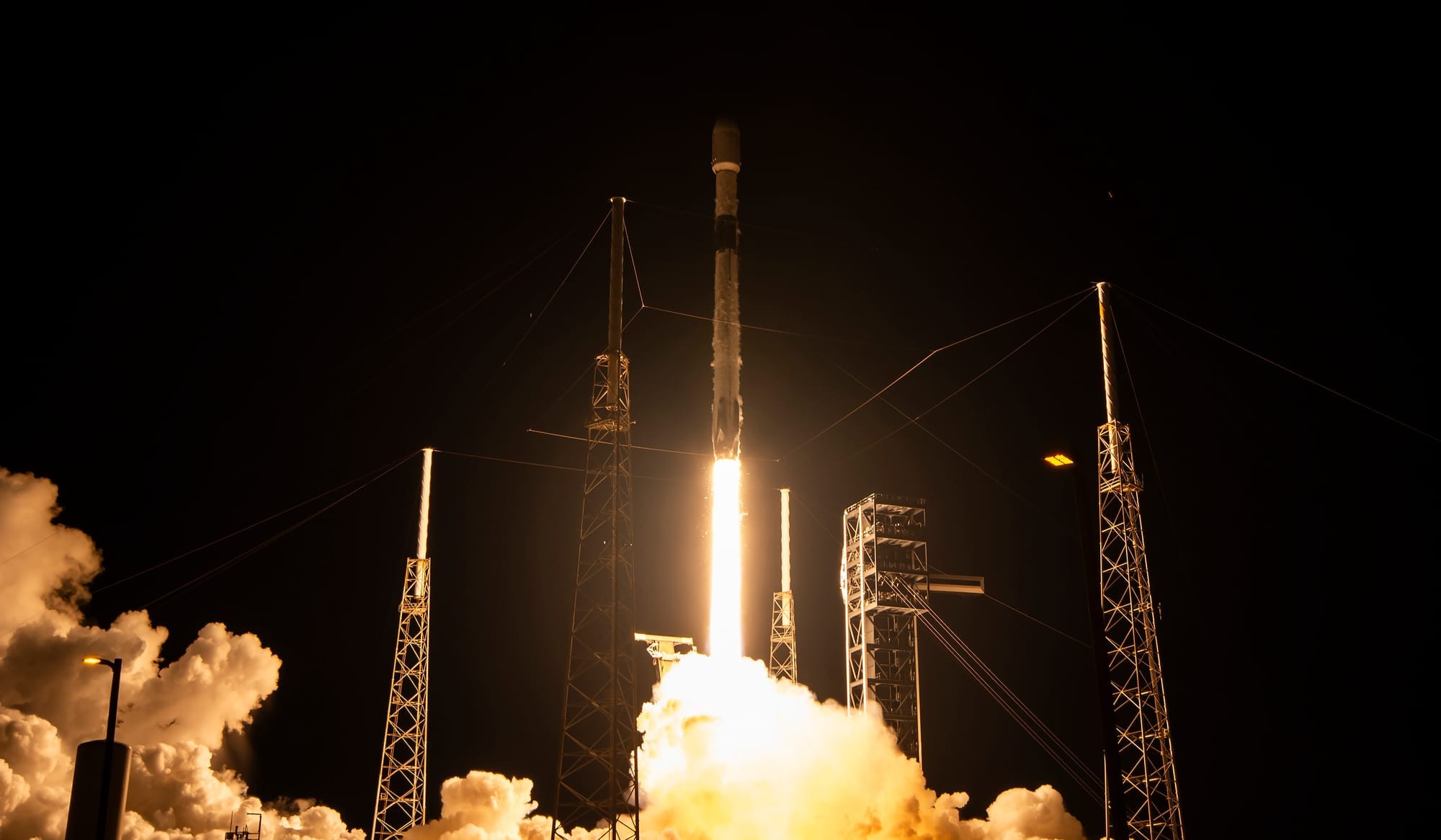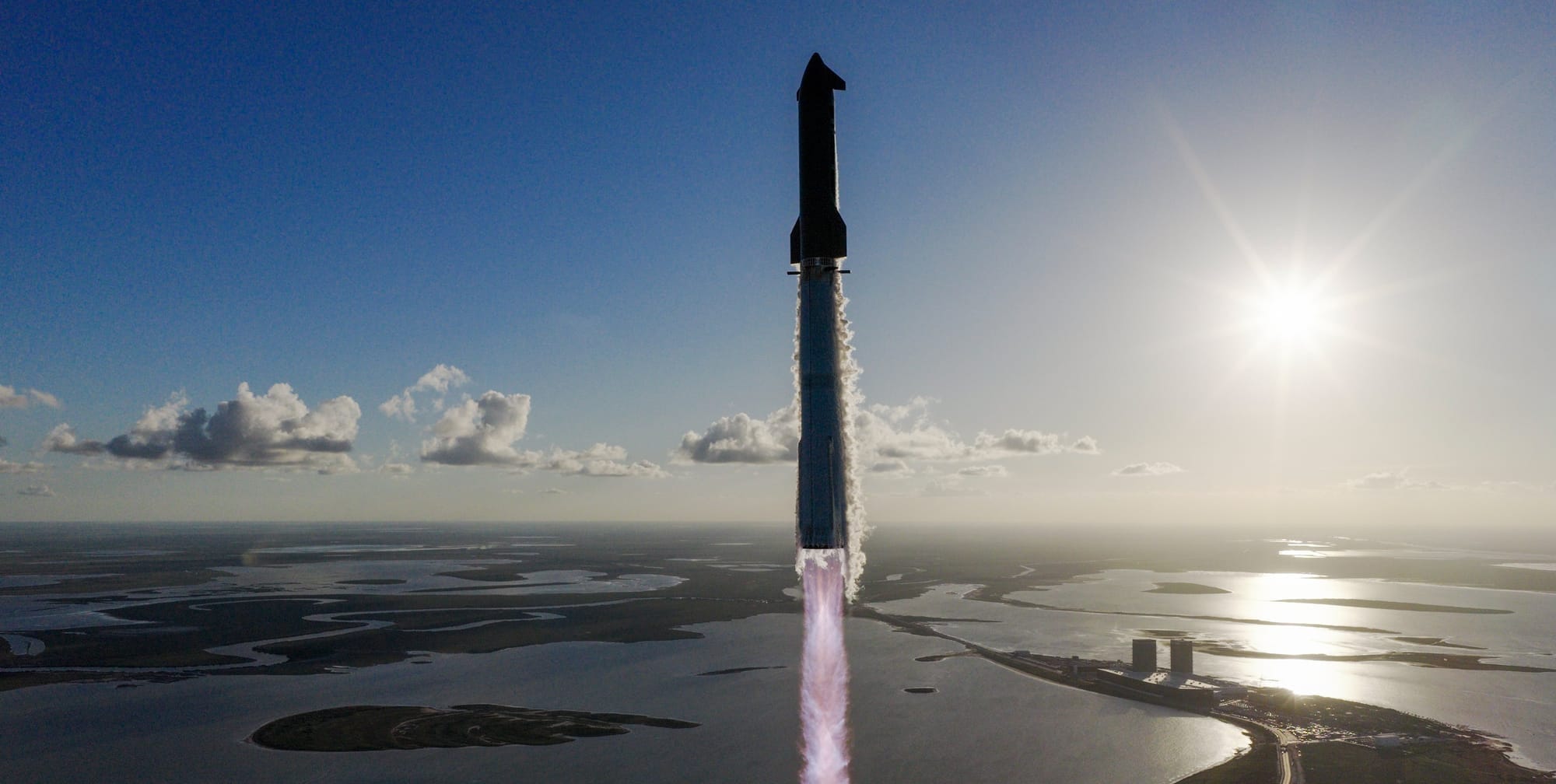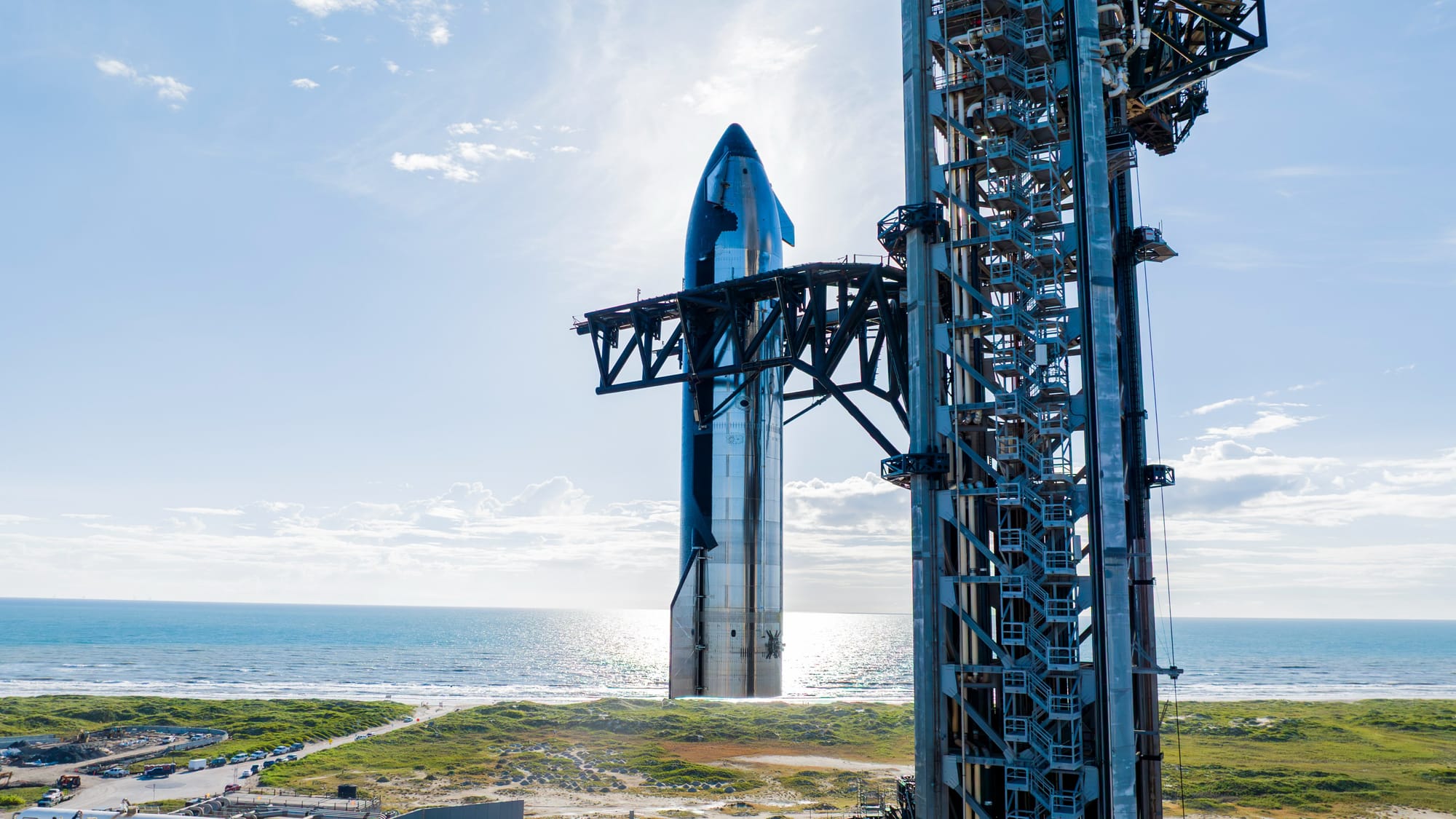Table of Contents
SpaceX's Falcon 9 has surpassed another reuse milestone while competitors are racing to fly their own reusable rockets.
In the early morning hours at Cape Canaveral, Florida, a Falcon 9 took off from Launch Complex 39A, on August 28th, carrying twenty-eight Starlink satellites aboard the Starlink Group 10-11 mission. The rocket successfully headed into low Earth orbit, delivering the satellites via an ascent atop of a booster and two burns with the second-stage.
While the second-stage was flying into orbit, Falcon 9's booster, B1067 for this mission, was conducting its routine landing profile, performed hundreds of times so far across the rocket's fleet. Aiming for the drone ship 'A Shortfall Of Gravitas', positioned a few hundred miles away from Florida, B1067 performed a brief atmospheric entry burn to protect itself from the intense heat before continuing to glide towards its target. Moments later, booster B1067 reignited its center engine to slow itself down to a soft touchdown onboard the drone ship, landing for its 30th time!
Falcon 9’s first stage lands on the A Shortfall of Gravitas droneship – the first orbital class rocket to successfully launch and land 30 times! pic.twitter.com/r3Dm91vu0p
— SpaceX (@SpaceX) August 28, 2025
Falcon 9 booster B1067 lands for the thirtieth time on the drone ship 'A Shortfall Of Gravitas', via SpaceX on Twitter.
Since its debut flight in June 2021, booster B1067 has supported a variety of missions, including CRS-22, Crew-3, Turksat 5B, Crew-4, CRS-25, Eutelsat HOTBIRD 13G, O3B mPOWER-A, PSN SATRIA, Telkomsat Merah Putih 2, Galileo L13, Koreasat-6A, and eighteen other Starlink missions. Through its flight history, the booster has landed on 'A Shortfall of Gravitas' sixteen times previously, the other Atlantic Ocean drone ship 'Just Read The Instructions' eleven times, the now Pacific-based 'Of Course I Still Love You' once, as well as having performed one return to launch site landing.
A prior milestone for B1067, and the wider Falcon 9 fleet, came in January of this year when the booster landed for the 25th time.
The day before B1067's record-breaking landing, a Falcon 9 booster landed on a drone ship for the 400th time. In December 2024, a total of 350 first-stage boosters had been reflown and recovered, which was also the 300th drone ship landing. In June 2024, Falcon 9 boosters had landed 300 times, the year before the rocket had touched down 200 times, and in December 2021 100 first-stages had landed. As of writing, Falcon 9 boosters have landed 495 times and reflown 460 times.
Where are the competitors?
With Falcon 9 now having surpassed reuse of a booster well over two dozen times, and overall milestones measured in the hundreds, it begs the question of where are its competitors? (excluding SpaceX's other reusable rocket program).
The first non-SpaceX company arguably closest to landing an orbital class first-stage booster is Blue Origin with its massive New Glenn. The rocket has already flown once at the start of the year, making it as far as an atmospheric entry burn before being lost. A second flight of New Glenn is targeting September 29th, off to Mars for NASA, and once again aiming to land on drone ship 'Jacklyn' downrange. Should that mission evade a booster landing, a third flight is already in testing.
Rocket Lab's Neutron may follow shortly after New Glenn, currently with a few milestones left to go ahead of launch, although no target month has been released. At the moment, final qualification tests of the Archimedes engines and first-stage are needed, along with a static fire of the stage as well as the second-stage. Neutron's launch pad is ready however, meaning once those tests are complete, the rocket can be integrated for its debut flight, pending regulatory approval.
Meanwhile across the Pacific in China, a few privately backed launch companies are heading to the launch pad this year. LandSpace, with its Zhuque-,3 is likely the closest, targeting a September or November debut flight. Tianlong-3 from Space Pioneer is may follow afterwards, currently preparing for a static fire campaign after implementing fixes following events last year. Lastly, Galactic Energy with its Pallas-1 and iSpace with Hyperbola-3 are hoping to fly before the end of the year. All four launch vehicles utilize a Falcon 9-esque design, with differing materials and propellant uses to compete against one another.
What is Falcon 9?
Falcon 9 is currently the world's only operational partially reusable medium-lift launch vehicle. The rocket is manufactured and operated by the American space company SpaceX. Falcon 9 currently launches from Vandenberg Space Force Base, in California, and Cape Canaveral, in Florida.
Falcon 9 lifts off from pad 39A in Florida! pic.twitter.com/ggSt2RAIiT
— SpaceX (@SpaceX) August 28, 2025
Falcon 9 lifts off from Launch Complex 39A for the Starlink Group 10-11 mission, via SpaceX on Twitter.
For recovery, Falcon 9 has four grid fins and four landing legs on the first-stage. The first stage either lands vertically on a drone ship or a landing pad back near its launch site, landing back at the launch site causes a greater reduction in payload capacity.
SpaceX claims that Falcon 9 can send up to 22,800 kilograms into low Earth orbit when expended or 18,400 kilograms when reused. Similarly, it can send up to 8,300 kilograms into geosynchronous transfer orbit when expended or 5,500 kilograms when reused.
The first-stage is powered by nine Merlin 1D engines burning rocket-grade kerosene and liquid oxygen to generate 771 tons of thrust. The second-stage is powered by a single Merlin 1D vacuum engine burning rocket-grade kerosene and liquid oxygen to generate 95 tons of thrust.
On the pad, the rocket is 70 meters tall with the first and second stages 3.7 meters in diameter, the fairing is 5.2 meters in diameter and tapers out from the top of the second-stage. Fully fuelled Falcon 9 weighs approximately 549,000 kilograms.






